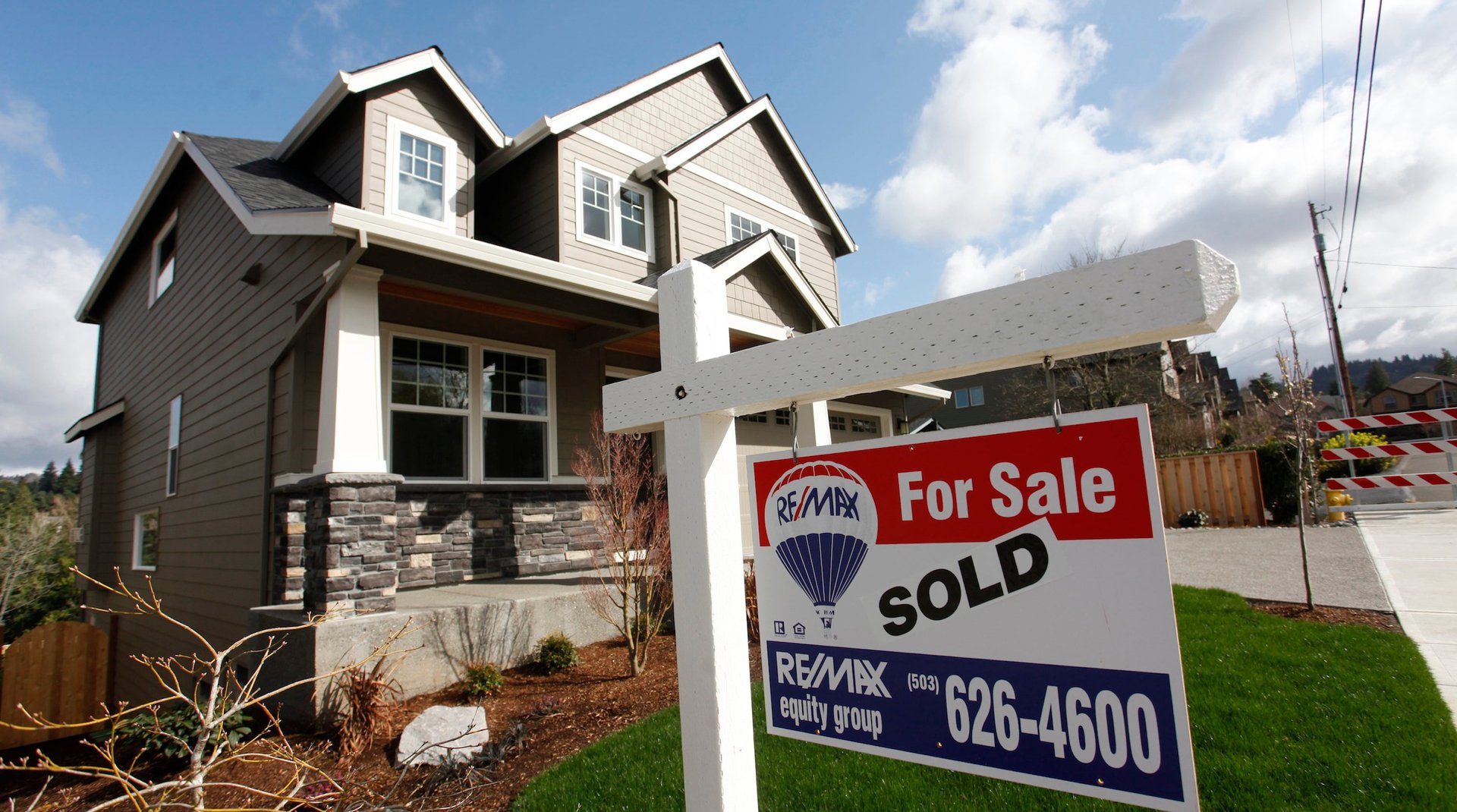Despite what you might have heard, millennials like me are buying homes
In the past several years, there has been much handwringing over what will become of America’s millennials once they finally emerge from the doldrums of economic recession. A generation largely underemployed and over-indebted, many 18 to 34 year olds can still be found living in their parents’ homes or renting apartments clustered in and around major cities. Increasingly, this state of affairs has economists worried. When will millennials start buying houses? When will they buy cars, have children, and move to the suburbs to resuscitate the American economy?


In the past several years, there has been much handwringing over what will become of America’s millennials once they finally emerge from the doldrums of economic recession. A generation largely underemployed and over-indebted, many 18 to 34 year olds can still be found living in their parents’ homes or renting apartments clustered in and around major cities. Increasingly, this state of affairs has economists worried. When will millennials start buying houses? When will they buy cars, have children, and move to the suburbs to resuscitate the American economy?
The answer, it turns out, has a lot to do with how you define the question.
One of the bellwethers of a healthy American economy has traditionally been tied to the health of the housing market. In the mid-2000s, for example, a period when the economy was considered to be doing very well, new houses were being built at impressive rates. Developments sprung up in the deserts of Nevada, in the marshland of Florida, and in the inland empire of Southern California. Before the real estate bubble burst in 2008, home values had attained stratospheric highs.
At the same time as this was happening, a certain segment of what we now know as the millennial population was graduating from college and starting their new lives as professional young adults. For many, this meant leaving behind their middle class, suburban experience in favor of the more exciting—and potentially promising—urban market. The shift also meant that the number of new home purchases—that traditional indicator of a healthy economy—began to fall apart.
The millennial preference for city life has been covered extensively by news outlets at both the local and national level, often postfixed with a sneering “just wait until they have kids, then they’ll move to the suburbs!” At the same time, millennials have been chastised for being unable to get out from beneath their debt, fueling fears that the dip in homeownership more than temporary.
As a married, gainfully employed millennial homeowner in my early 30s—yes, that is still considered part of the millennial demographic—I can’t help but think the doom-and-gloom media narrative is a bit overdone. Unlike too many of my peers, I don’t have much debt, but I’m also not a banker for Goldman Sachs. Far from stereotypes of the urban creative types, my wife and I are responsible with our money and realistic when it comes to what kind of a house we can afford.
I grew up in New Jersey, 20 miles from Philadelphia, Pennsylvania, in a house that was new when my parents bought it in the late 1970s. Our entire subdivision, along with those that neighbored ours, were built on land that a decade before had been woods. After graduating from college, I moved to Cambridge, Massachusetts, to live with my girlfriend—also formerly from the suburbs—in an apartment in a bustling neighborhood. When we moved back to New Jersey several years later to buy a house, we purposefully avoided the kind of car-dependent, sprawling suburban towns that we both grew up in. Instead, we wanted a walkable town, somewhere where we would be able to get around by bike, or to take a subway downtown. As a result, we limited our search to older towns with efficient train lines. The house my wife and I ended up buying in southern New Jersey is 112 years old.
According to the National Association of Realtors, this actually tracks with what plenty of other millennials are doing. The NAR report notes that “younger buyers tend to buy older homes, and are more likely to buy previously owned homes.” Indeed, across the southern half of our state, towns like Collingswood, Haddon Township, and Haddonfield are filling up with young professionals working in Philadelphia who want a single-family house, but who still want to live in a semi-urban setting. Our commuter towns have their own downtowns, our restaurants can be walked to, and our jobs are a train—not car—ride away.
At the same time, it’s important to remember the reasons why millennials weren’t rushing out to their local realtor’s office a few years ago. The recession hit people my age hard, very hard, creating a chilling effect on the housing market. Not many 24 year olds are in a position to buy a house—especially during an economic downturn. Six years later, however, the first wave of 30-ish millennials are making their preferences known. And polls show these preferences overwhelmingly include homeownership. A June survey of Realtor.com visitors reported that 65% of respondents between ages 25 and 34 were looking to purchase a home before the fall of 2015. If anything, this should be cause for optimism.
If economists are waiting for an entire generation to move back to their parents’ outer suburbs, they may be waiting a while longer. (As an anecdotal indication of the strength of this movement, a group in southern New Jersey formed to discuss urbanist issues has swelled to over 100 members in just a few months.) But more importantly, Americans need to remember the cyclical nature of generational trends. In the early ’90s, Generation Xers were called “slackers”—now they’re an “economic engine.” There’s no reason to think millennials won’t rebound as well.
Simply put, millennials are buying homes again—just not necessarily new tract houses like our parents. We’re growing up, whether the media has caught on or not.